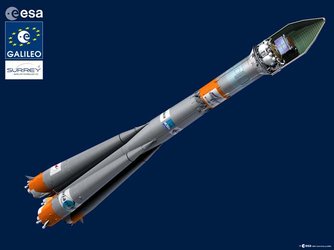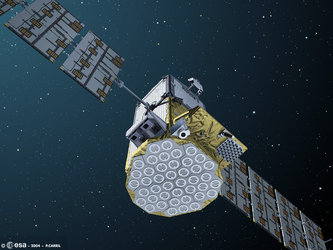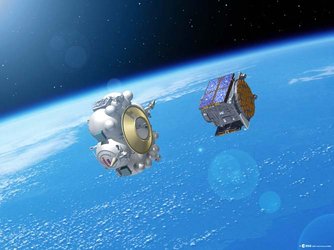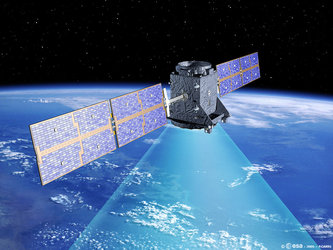Accept all cookies Accept only essential cookies See our Cookie Notice

About ESA
The European Space Agency (ESA) is Europe’s gateway to space. Its mission is to shape the development of Europe’s space capability and ensure that investment in space continues to deliver benefits to the citizens of Europe and the world.
Highlights
ESA - United space in Europe
This is ESA ESA facts Member States & Cooperating States Funding Director General Top management For Member State Delegations European vision European Space Policy ESA & EU Space Councils Responsibility & Sustainability Annual Report Calendar of meetings Corporate newsEstablishments & sites
ESA Headquarters ESA ESTEC ESA ESOC ESA ESRIN ESA EAC ESA ESAC Europe's Spaceport ESA ESEC ESA ECSAT Brussels Office Washington OfficeWorking with ESA
Business with ESA ESA Commercialisation Gateway Law at ESA Careers Cyber resilience at ESA IT at ESA Newsroom Partnerships Merchandising Licence Education Open Space Innovation Platform Integrity and Reporting Administrative Tribunal Health and SafetyMore about ESA
History ESA Historical Archives Exhibitions Publications Art & Culture ESA Merchandise Kids Diversity ESA Brand Centre ESA ChampionsLatest
Space in Member States
Find out more about space activities in our 23 Member States, and understand how ESA works together with their national agencies, institutions and organisations.
Science & Exploration
Exploring our Solar System and unlocking the secrets of the Universe
Go to topicAstronauts
Missions
Juice Euclid Webb Solar Orbiter BepiColombo Gaia ExoMars Cheops Exoplanet missions More missionsActivities
International Space Station Orion service module Gateway Concordia Caves & Pangaea BenefitsLatest
Space Safety
Protecting life and infrastructure on Earth and in orbit
Go to topicAsteroids
Asteroids and Planetary Defence Asteroid danger explained Flyeye telescope: asteroid detection Hera mission: asteroid deflection Near-Earth Object Coordination CentreSpace junk
About space debris Space debris by the numbers Space Environment Report In space refuelling, refurbishing and removingSafety from space
Clean Space ecodesign Zero Debris Technologies Space for Earth Supporting Sustainable DevelopmentApplications
Using space to benefit citizens and meet future challenges on Earth
Go to topicObserving the Earth
Observing the Earth Future EO Copernicus Meteorology Space for our climate Satellite missionsCommercialisation
ESA Commercialisation Gateway Open Space Innovation Platform Business Incubation ESA Space SolutionsLatest
Enabling & Support
Making space accessible and developing the technologies for the future
Go to topicBuilding missions
Space Engineering and Technology Test centre Laboratories Concurrent Design Facility Preparing for the future Shaping the Future Discovery and Preparation Advanced Concepts TeamSpace transportation
Space Transportation Ariane Vega Space Rider Future space transportation Boost! Europe's Spaceport Launches from Europe's Spaceport from 2012Latest

GSTB-V2/A launch - jettison of Soyuz/Fregat fairing
Thank you for liking
You have already liked this page, you can only like it once!
Artist view of the launch of GSTB-V2/A, the first of ESA’s two Galileo System Test Bed Version 2 demonstrators for the Galileo global navigation satellite system, due in December 2005, on a Russian Soyuz/Fregat vehicle. The launcher’s fairing is jettisoned and unveils the satellite with its phased array L-band antenna able to illuminate all the visible Earth below it.
The objective of the two GSTB-V2 satellites is to characterize the critical technologies for the Galileo Navigation Payload. GSTB-V2/A will secure the Galileo frequency filings, validate new technologies for operational use, characterise the radiation environment of the medium earth orbits that the operational satellites will occupy and enable experimentation with live Galileo signals. This 600-kg satellite was built by Surrey Satellite Technology Ltd. (SSTL) of Great-Britain.
The second satellite, GSTB-V2/B, built by the European consortium Galileo Industries, will demonstrate the Passive Hydrogen Maser (PHM), the most accurate atomic ever launched to orbit. Developed under ESA contract, the PHM will play a key role for a wide range of high precision navigation applications.
Thereafter up to four operational satellites will be launched to validate the basic Galileo space and related ground segment. Once this In-Orbit Validation (IOV) phase has been completed, the remaining satellites will be installed to reach the Full Operational Capability (FOC).
Galileo will be Europe’s own global navigation satellite system, providing a highly accurate, guaranteed global positioning service under civilian control. It will be inter-operable with the Global Positioning System (GPS) and Russia’s Global Navigation Satellite System (Glonass), the two other global satellite navigation systems. Galileo will deliver real-time positioning accuracy down to the metric range with an unrivaled integrity.
Numerous applications are planned for Galileo including positioning and derived value added services for transport by road, rail, air and sea, fisheries and agriculture, oil prospecting, civil protection activities, building, public works and telecommunications.
The operational Galileo system will consist of 30 satellites (27 operational + 3 active spares), deployed in circular Medium Earth Orbit (MEO) at an altitude of 23,616 km altitude, over three orbital planes inclined at 56 to the equatorial plane.
To prepare for Galileo, Europe has implemented a preliminary satellite-based navigation system with the European overlay navigation system (EGNOS). This system delivers corrective and integrity data to enhance the performance of the two existing military navigation satellite constellations (GPS and Glonass). It has been operational since mid-2003.
-
CREDIT
ESA - P. CARRIL -
LICENCE
ESA Standard Licence

GSTB-V2/A on Soyuz/Fregat launch vehicle

GSTB-V2/A launch - Soyuz/Fregat launch vehicle

GSTB-V2/B in orbit (artist impression)

GSTB-V2/A launch - satellite separates from Fregat u…















 Germany
Germany
 Austria
Austria
 Belgium
Belgium
 Denmark
Denmark
 Spain
Spain
 Estonia
Estonia
 Finland
Finland
 France
France
 Greece
Greece
 Hungary
Hungary
 Ireland
Ireland
 Italy
Italy
 Luxembourg
Luxembourg
 Norway
Norway
 The Netherlands
The Netherlands
 Poland
Poland
 Portugal
Portugal
 Czechia
Czechia
 Romania
Romania
 United Kingdom
United Kingdom
 Slovenia
Slovenia
 Sweden
Sweden
 Switzerland
Switzerland

























